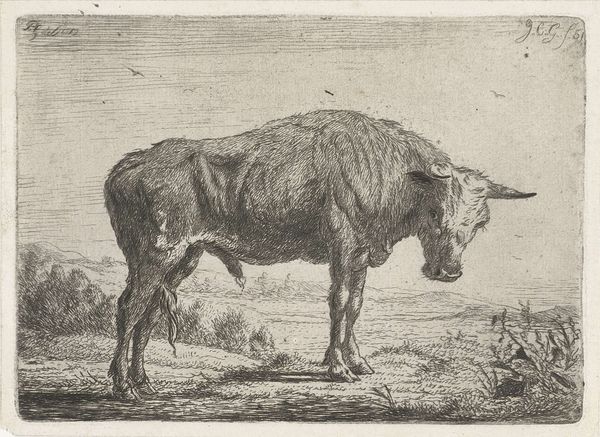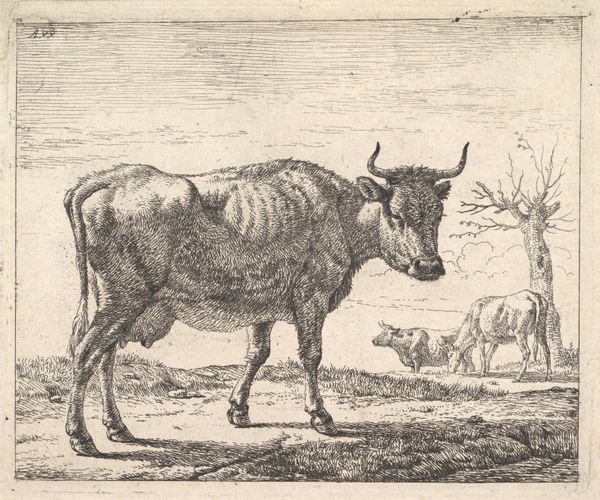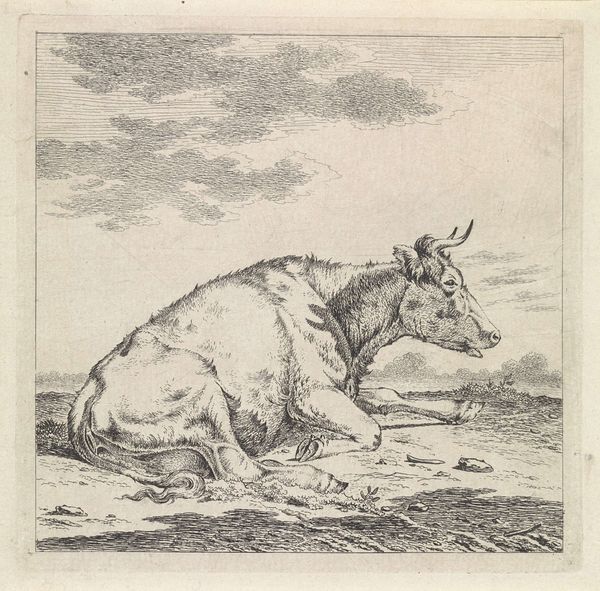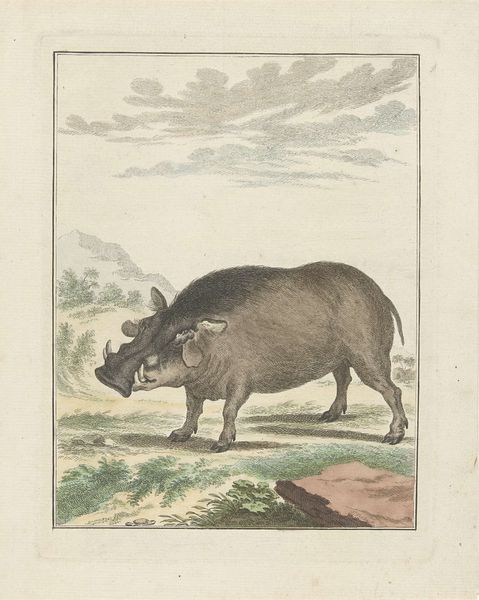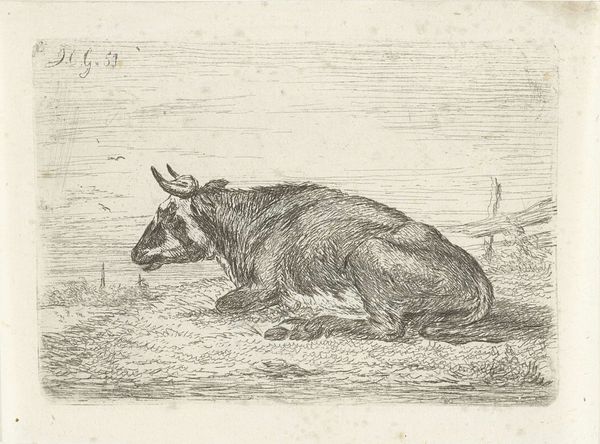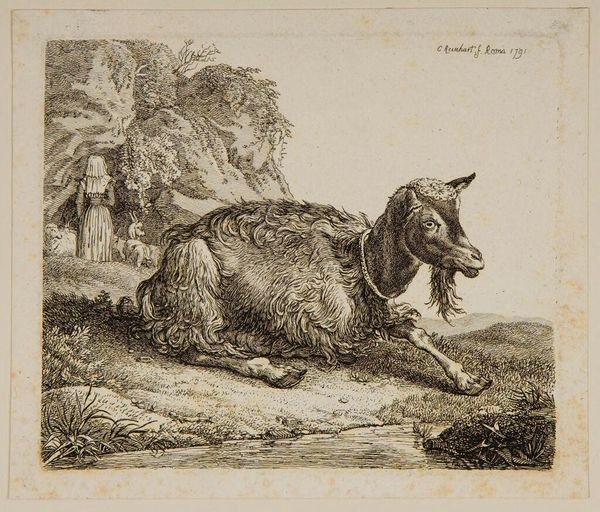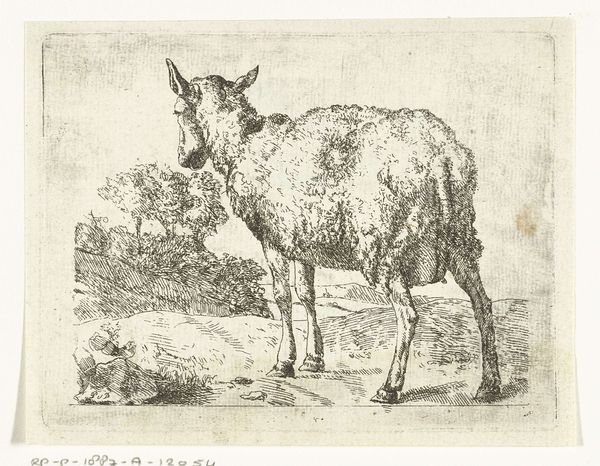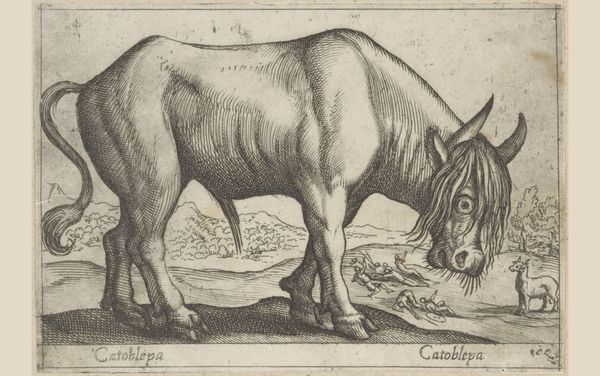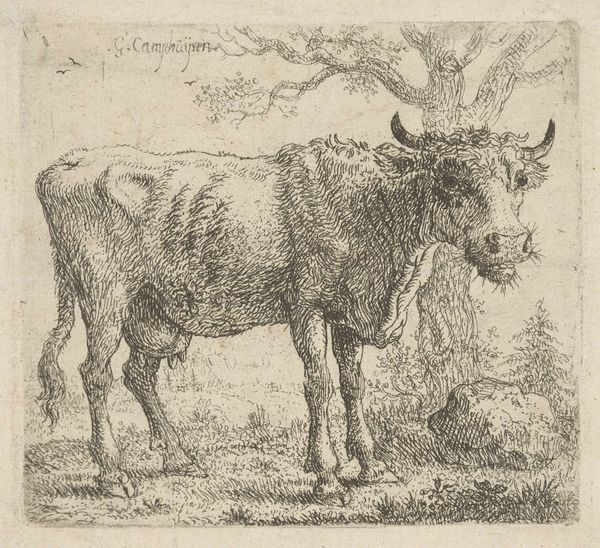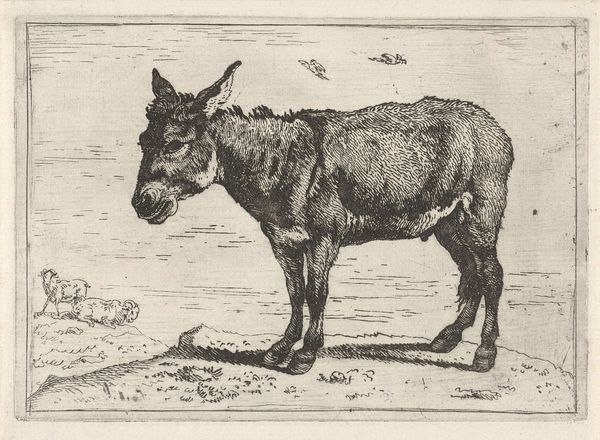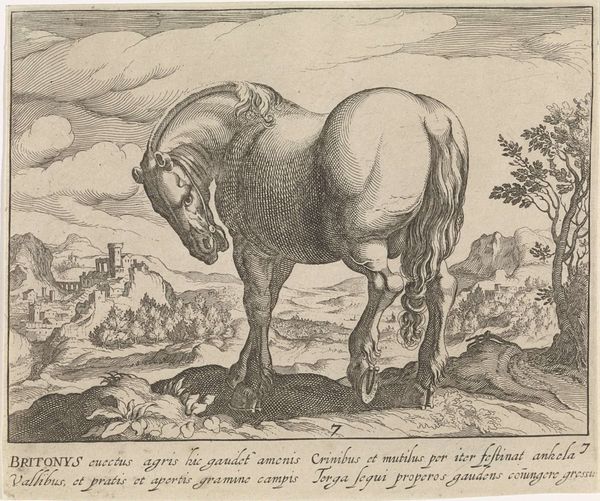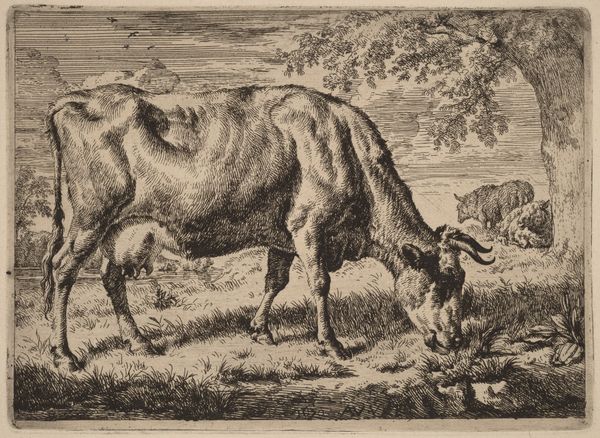
print, etching, engraving
#
baroque
#
animal
# print
#
etching
#
engraving
Dimensions: plate: 34.2 x 28.1 cm (13 7/16 x 11 1/16 in.) sheet: 48.5 x 33.4 cm (19 1/8 x 13 1/8 in.)
Copyright: National Gallery of Art: CC0 1.0
Editor: So, this is "Nashorn Rhinoceros" by Johann Elias Ridinger, made in 1748. It's a print, an etching and engraving, actually. The texture is just incredible; I’m curious, what's your read on it? Curator: From a materialist perspective, it's important to consider how this image was produced. The layering of etching and engraving suggests a deliberate process, a conscious manipulation of materials to create the final effect. But, thinking beyond just the artist’s hand, what socio-economic factors would influence the piece being produced? Editor: Well, it looks almost scientific…like a record of a real thing. The artist took pride in accurately drawing from real life, apparently, as seen in the description below the artwork. Was the rhino on tour or something? Curator: Exactly! The inscription details how Ridinger saw this rhino in various German cities. This print, then, becomes a commodity, a means of disseminating knowledge and fueling fascination. How does this contrast with the actual lived experience of the animal being transported for exhibition? Editor: It feels exploitative now that you mention it, which changes my perception of the work. Like it's less about accurate portrayal, and more about exploiting something exotic and unfamiliar for entertainment and maybe scientific study. I never thought about the commerce aspect of art so explicitly before! Curator: Precisely. Examining the means of production—the rhino's display, the printmaking techniques, its distribution—reveals the social forces at play. This piece isn't just art; it's a reflection of power dynamics and early capitalist practices. It definitely leaves you something to chew on, huh?
Comments
No comments
Be the first to comment and join the conversation on the ultimate creative platform.
